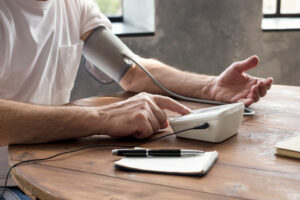Dealing with chronic lower back pain and foot discomfort can be frustrating, especially when treatments for one area don’t seem to help the other. This is often the case when anterior pelvic tilt and foot problems are connected. Effective anterior pelvic tilt and foot problems management strategies require a holistic approach that addresses the entire kinetic chain, from the ground up. A successful anterior pelvic tilt treatment plan often involves more than just stretching your hips; it requires correcting the foundational issues in your feet that contribute to poor posture and pain. Get a consultation with the best Podiatrists in Brooklyn.
A Two-Pronged Approach to Management and Treatment
Because anterior pelvic tilt (APT) and foot problems like overpronation are so interconnected, the most effective treatment plan addresses both issues simultaneously. The goal is to create a stable foundation with your feet while restoring muscle balance around your hips and core. This comprehensive strategy offers the best chance for long-term relief.
Foundational Anterior Pelvic Tilt and Foot Problems Management Strategies
Correcting the alignment starts from the ground up. If your feet are not providing a stable base, any postural corrections you make at the hip level will be a constant uphill battle.
- Custom Orthotics
This is often the most critical intervention for anyone whose APT is driven by poor foot mechanics. A podiatrist can prescribe custom-molded orthotics that address your specific foot issues. These are not the same as off-the-shelf inserts. Custom orthotics are designed to:
- Control Overpronation: They provide targeted arch support to prevent your foot from rolling inward.
- Stabilize the Foot: By cradling the heel and supporting the arch, they create a stable foundation for every step.
- Correct Alignment: This stability travels up the leg, reducing the internal rotation that pulls the pelvis forward.
- Absorb Shock: They help dissipate impact forces, reducing stress on the feet, knees, and hips.
- Supportive Footwear
The right shoes are just as important as orthotics. A good pair of shoes enhances the effectiveness of your orthotic device. Look for stability shoes that feature:
- A firm heel counter to prevent the heel from wobbling.
- Torsional stability (the shoe shouldn’t twist easily).
- Sufficient cushioning to absorb impact.
Avoid flimsy, unsupportive footwear like flip-flops or old, worn-out sneakers, as they can undermine your treatment efforts.
Corrective Anterior Pelvic Tilt Treatment for Hips and Core
While your feet are being supported, you also need to address the muscle imbalances that have developed around your pelvis. A physical therapist can help design a program, but the core principles involve stretching what’s tight and strengthening what’s weak.
- Stretching Tight Muscles
The primary culprits in APT are tight hip flexors and lower back muscles. Daily stretching is essential to release this tension.
- Kneeling Hip Flexor Stretch: Kneel on one knee (use a cushion), keeping your back straight. Gently push your hips forward until you feel a stretch in the front of your hip. Hold for 30 seconds and switch sides.
- Piriformis Stretch: Lie on your back with both knees bent. Cross one ankle over the opposite knee. Gently pull the bottom leg toward your chest until you feel a stretch in the glute of the crossed leg.
- Strengthening Weak Muscles
The muscles that counteract the forward pull of the pelvis are often weak and underused.
- Glute Bridges: Lie on your back with your knees bent and feet flat on the floor. Squeeze your glutes and lift your hips toward the ceiling until your body forms a straight line from your shoulders to your knees.
- Planks: This classic exercise strengthens the entire core, including the deep abdominal muscles that help stabilize the pelvis.
- Bird-Dog: Start on all fours. Extend one arm straight forward and the opposite leg straight back, keeping your back flat. This improves core stability and balance.
The Role of a Podiatrist
Tackling this complex issue requires expert guidance. A podiatrist is uniquely qualified to diagnose the biomechanical relationship between your feet and your posture. By performing a gait analysis and a thorough foot examination, they can determine the degree to which your foot mechanics are contributing to your anterior pelvic tilt.
Visiting a specialized podiatry clinic in Brooklyn is the best way to get a comprehensive evaluation. An experienced professional can not only fit you for custom orthotics but can also work in conjunction with a physical therapist to ensure your treatment plan is cohesive. For residents in the area, a trusted podiatry clinic in Brooklyn can be the starting point for a journey toward better alignment and a pain-free life.
Don’t let the cycle of poor posture and chronic pain continue. By implementing a combination of anterior pelvic tilt and foot problems management strategies, you can address the root cause of your discomfort. A proper anterior pelvic tilt treatment plan that starts with your feet can restore balance to your entire body and help you move with confidence and ease. At Doral Health & Wellness, we have Podiatrists with extensive education and expertise. Our address is 1797 Pitkin Avenue, New York, NY 11212. To make an appointment, please call + 1 718 367 2555, or register your information and make direct contact with us at https://yuz88hfiyh7.typeform.com/Doralintake or send an email to info@doralhw.org.






